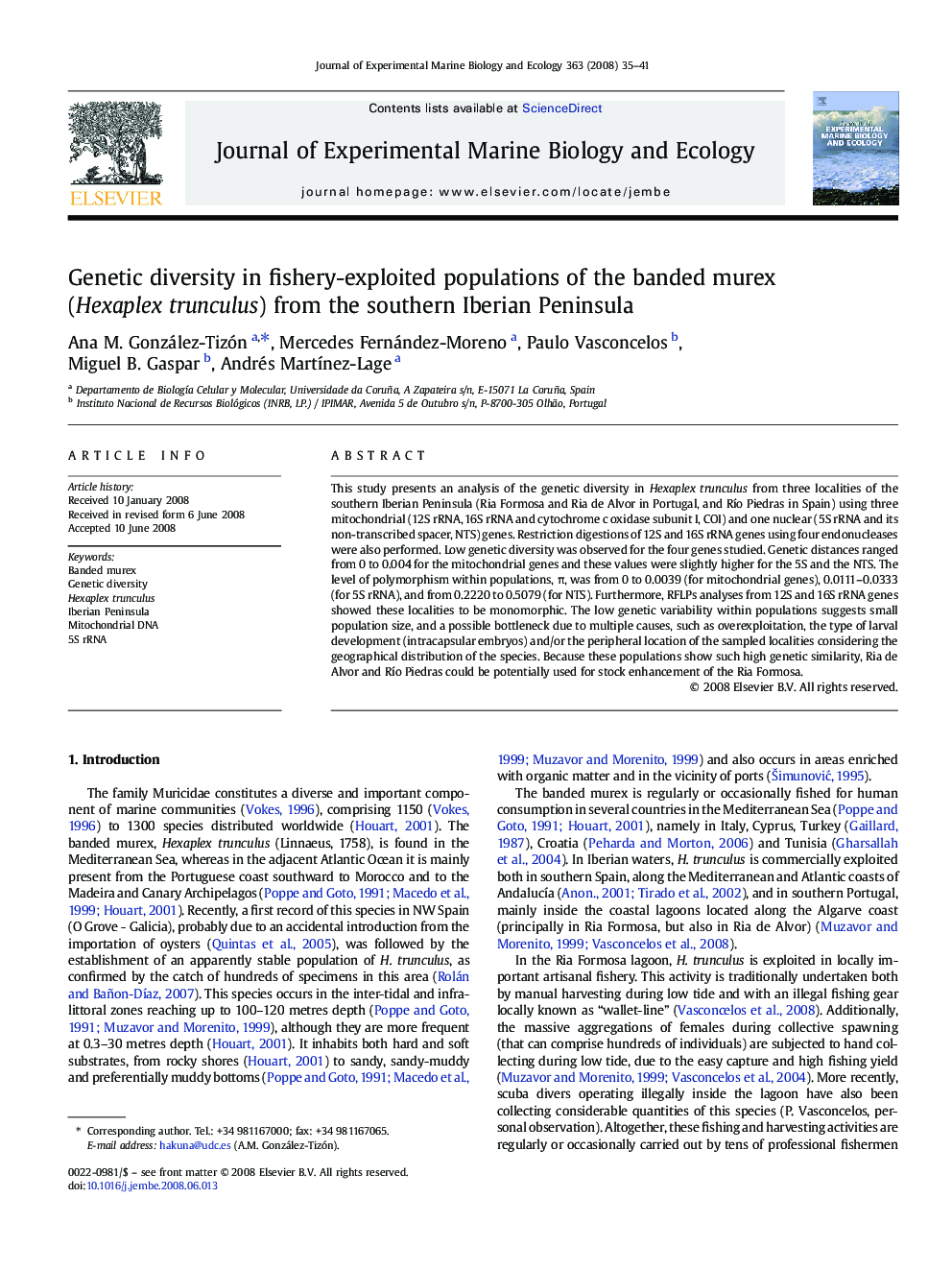| Article ID | Journal | Published Year | Pages | File Type |
|---|---|---|---|---|
| 4397273 | Journal of Experimental Marine Biology and Ecology | 2008 | 7 Pages |
This study presents an analysis of the genetic diversity in Hexaplex trunculus from three localities of the southern Iberian Peninsula (Ria Formosa and Ria de Alvor in Portugal, and Río Piedras in Spain) using three mitochondrial (12S rRNA, 16S rRNA and cytochrome c oxidase subunit I, COI) and one nuclear (5S rRNA and its non-transcribed spacer, NTS) genes. Restriction digestions of 12S and 16S rRNA genes using four endonucleases were also performed. Low genetic diversity was observed for the four genes studied. Genetic distances ranged from 0 to 0.004 for the mitochondrial genes and these values were slightly higher for the 5S and the NTS. The level of polymorphism within populations, π, was from 0 to 0.0039 (for mitochondrial genes), 0.0111–0.0333 (for 5S rRNA), and from 0.2220 to 0.5079 (for NTS). Furthermore, RFLPs analyses from 12S and 16S rRNA genes showed these localities to be monomorphic. The low genetic variability within populations suggests small population size, and a possible bottleneck due to multiple causes, such as overexploitation, the type of larval development (intracapsular embryos) and/or the peripheral location of the sampled localities considering the geographical distribution of the species. Because these populations show such high genetic similarity, Ria de Alvor and Río Piedras could be potentially used for stock enhancement of the Ria Formosa.
